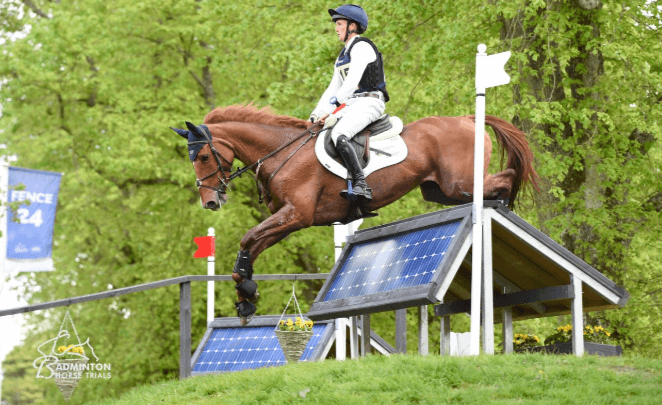What are the three phases of eventing, and what does each entail?

Introduction to Eventing
Eventing is often referred to as the triathlon of equestrian sports. It combines the elegance of dressage, the thrill of cross-country, and the precision of show jumping into a single competition. This sport requires a high level of skill, endurance, and partnership between horse and rider.
History of Eventing
Eventing has a rich history that dates back to military cavalry training. The sport has evolved significantly over the years, becoming a popular equestrian discipline worldwide.
Origins
Eventing originated as a comprehensive test for cavalry horses, ensuring they were fit for service. The combination of dressage, cross-country, and show jumping simulated the various challenges military horses would face.
Evolution
Over time, eventing evolved into a competitive sport with standardized rules and regulations. The sport gained popularity in the early 20th century and was included in the Olympic Games in 1912.
Modern Day Eventing
Today, eventing is a globally recognized sport with numerous competitions held annually. It attracts top riders and horses from around the world, showcasing their skills and versatility.
Overview of the Three Phases of Eventing
Eventing is divided into three phases, each testing different aspects of horse and rider capabilities.
Dressage
Dressage is the first phase of eventing and focuses on the horse’s obedience, flexibility, and harmony with the rider.
What is Dressage?
Dressage, often described as “horse ballet,” involves a series of predetermined movements performed in an arena. The horse and rider must demonstrate precision, control, and grace.
Importance of Dressage
Dressage sets the tone for the entire eventing competition. It is crucial for building a strong foundation of communication and trust between horse and rider.
Dressage Tests and Movements
Dressage tests vary in complexity, depending on the competition level. They include movements like circles, serpentines, and transitions between gaits. The horse’s ability to perform these movements smoothly and accurately is critical.
Cross-Country
Cross-country is the most exhilarating phase of eventing, testing the horse and rider’s endurance, speed, and jumping ability.
What is Cross-Country?
Cross-country involves navigating a course with various obstacles, including ditches, water jumps, and banks. The course is typically set in an open field and requires the horse to jump over natural and artificial obstacles.
Importance of Cross-Country
This phase challenges the horse’s stamina and the rider’s ability to guide their mount through a demanding course. It is often the most anticipated part of an eventing competition due to its thrilling nature.
Types of Obstacles in Cross-Country
Obstacles in cross-country vary in size and complexity. They include solid fences, water complexes, and combination jumps. Each obstacle tests the horse’s bravery and the rider’s skill.
Show Jumping
Show jumping is the final phase of eventing, requiring precision and accuracy over a series of jumps.
What is Show Jumping?
Show jumping involves navigating a course of colorful, knockable fences within an arena. The horse and rider must complete the course without knocking down any rails and within a specified time limit.
Importance of Show Jumping
This phase tests the horse’s agility and the rider’s precision. It can make or break a competitor’s overall standing, as penalties are incurred for knocked rails and time faults.
Key Elements of Show Jumping
The show jumping course includes various types of jumps, such as verticals, oxers, and combinations. The height and spread of the jumps depend on the competition level.
Training for Eventing
Effective training for eventing involves preparing for each phase’s unique demands.
Preparing for Dressage
Dressage training focuses on improving the horse’s flexibility, obedience, and strength. Riders work on refining their aids and achieving smooth, harmonious movements.
Preparing for Cross-Country
Cross-country training emphasizes building the horse’s stamina and confidence over various obstacles. Riders practice navigating different types of jumps and improving their horse’s fitness.
Preparing for Show Jumping
Show jumping training involves practicing different jump combinations and improving the horse’s agility and precision. Riders focus on developing their timing and accuracy.
Equipment Needed for Eventing
Each phase of eventing requires specific equipment to ensure safety and optimal performance.
Dressage Equipment
Dressage equipment includes a dressage saddle, bridle, and appropriate attire for the rider. The tack should be comfortable and allow for precise communication between horse and rider.
Cross-Country Equipment
Cross-country equipment includes a cross-country saddle, protective boots for the horse, and safety gear for the rider, such as a helmet and body protector.
Show Jumping Equipment
Show jumping equipment consists of a jumping saddle, appropriate bridle, and protective gear for both horse and rider. The tack should be well-fitted to ensure maximum performance.
Safety in Eventing
Safety is paramount in eventing due to the sport’s demanding nature.
Safety Gear
Riders must wear helmets, body protectors, and appropriate footwear. Horses should have protective boots and well-fitted tack.
Preventing Injuries
Regular health check-ups, proper conditioning, and training can prevent injuries. It’s crucial to recognize and address any signs of discomfort or stress in the horse.
Emergency Procedures
Having a clear plan for emergencies, including access to veterinary services and first-aid kits, is essential. Riders and trainers should be well-versed in emergency procedures.
Famous Eventing Competitions
Several prestigious eventing competitions attract top riders and horses from around the world.
Badminton Horse Trials
The Badminton Horse Trials, held in England, is one of the most renowned eventing competitions. It features challenging courses and attracts elite competitors.
Burghley Horse Trials
The Burghley Horse Trials, also held in England, is known for its demanding cross-country course. It is a key event in the eventing calendar.
Rolex Kentucky Three-Day Event
The Rolex Kentucky Three-Day Event, held in the USA, is a premier competition in North America. It features top riders and horses competing in all three phases of eventing.
Top Eventing Riders
Eventing has produced many legendary riders who have made significant contributions to the sport.
Pioneers
Early pioneers in eventing helped shape the sport and set standards for future generations. Their dedication and achievements laid the groundwork for modern eventing.
Current Champions
Today’s champions continue to push the boundaries of the sport, achieving remarkable feats and inspiring new riders.
Rising Stars
Upcoming riders are making their mark in eventing, showcasing their talent and determination in various competitions.
Judging and Scoring in Eventing
Judging and scoring in eventing vary for each phase, with penalties and scores contributing to the overall result.
Scoring in Dressage
Dressage is scored based on the accuracy and quality of the movements. Judges award points for each movement, and penalties are given for errors.
Scoring in Cross-Country
Cross-country scoring involves penalties for refusals, run-outs, and time faults. The goal is to complete the course with the fewest penalties.
Scoring in Show Jumping
Show jumping scoring includes penalties for knocked rails and time faults. Riders aim to complete the course clear and within the time limit.
Common Challenges in Eventing
Eventing presents various challenges that riders must overcome to succeed.
Overcoming Nerves
Nerves can affect performance, so riders must develop techniques to stay calm and focused.
Building Trust with Your Horse
A strong bond with the horse is crucial for success. Riders must build trust through consistent training and positive reinforcement.
Managing Time and Energy
Eventing requires careful management of time and energy to ensure peak performance in all three phases.
Nutrition and Health for Eventing Horses
Proper nutrition and health care are essential for eventing horses to perform at their best.
Feeding Regimen
A balanced diet tailored to the horse’s needs is crucial. This includes high-quality forage, grains, and supplements as necessary.
Supplements
Supplements can help address specific nutritional deficiencies and support overall health and performance.
Health Check-ups
Regular veterinary check-ups ensure that any health issues are identified and addressed promptly.
Eventing for Beginners
Getting started in eventing can be daunting, but with the right guidance, it can be an enjoyable journey.
Getting Started
Beginners should start with basic riding lessons and gradually progress to eventing-specific training.
Finding a Trainer
A knowledgeable trainer can provide valuable guidance and support, helping beginners navigate the challenges of eventing.
First Competitions
Starting with smaller, local competitions allows beginners to gain experience and build confidence.
Advanced Techniques in Eventing
Advanced techniques can help riders excel in each phase of eventing.
Advanced Dressage Movements
Riders can work on complex dressage movements, such as half-pass and flying changes, to enhance their performance.
Complex Cross-Country Courses
Practicing more challenging cross-country courses helps improve the horse’s confidence and agility.
Advanced Show Jumping Techniques
Riders can refine their jumping techniques, focusing on precision and timing, to excel in show jumping.
Balancing Work and Eventing
Balancing a career and eventing requires effective time management and dedication.
Time Management Tips
Creating a schedule and setting priorities can help riders balance work and training.
Setting Realistic Goals
Setting achievable goals ensures steady progress and prevents burnout.
Maintaining Motivation
Staying motivated is crucial. Riders can seek inspiration from their achievements and the support of the eventing community.
Psychological Aspects of Eventing
Mental preparation is as important as physical training in eventing.
Mental Preparation
Riders should develop mental strategies to stay focused and calm during competitions.
Dealing with Pressure
Learning to handle pressure and setbacks is essential for success in eventing.
Staying Focused
Maintaining focus and concentration during each phase helps ensure optimal performance.
Eventing Community and Support Networks
The eventing community offers valuable support and resources for riders.
Local Clubs
Joining local eventing clubs provides opportunities for training, competitions, and networking.
Online Communities
Online forums and social media groups offer a platform for sharing experiences and seeking advice.
Mentorship Opportunities
Mentorship programs connect riders with experienced professionals who can provide guidance and support.
Future of Eventing
Eventing continues to evolve, with new trends and innovations shaping the sport’s future.
Innovations
Technological advancements, such as wearable devices and improved safety gear, enhance training and competition.
Trends
Current trends in eventing include a focus on sustainability and horse welfare.
Upcoming Events
Exciting upcoming events provide opportunities for riders to showcase their skills and compete at the highest level.
FAQs About Eventing
What are the three phases of eventing and what does each entail?
The three phases of eventing are dressage, cross-country, and show jumping. Dressage tests the horse’s obedience and precision through a series of movements. Cross-country involves navigating a challenging course with various obstacles, testing stamina and bravery. Show jumping requires the horse to complete a course of jumps within a time limit, emphasizing accuracy and agility.
How can I get started in eventing?
Begin with basic riding lessons and gradually progress to eventing-specific training. Finding a knowledgeable trainer and starting with smaller, local competitions can help build experience and confidence.
What is the best horse breed for eventing?
While various breeds can excel in eventing, Thoroughbreds and Warmbloods are popular choices due to their athleticism, stamina, and versatility.
How do I train my horse for eventing?
Training should focus on each phase of eventing: improving flexibility and precision for dressage, building stamina and confidence for cross-country, and enhancing agility and accuracy for show jumping.
What should I expect at my first eventing competition?
Expect a busy and structured environment. Familiarize yourself with the schedule, prepare all necessary equipment, and ensure your horse is well-conditioned. Focus on enjoying the experience and learning from it.
How can I improve my eventing scores?
Consistent training, proper nutrition, and regular health check-ups for your horse are crucial. Work with a trainer to refine your techniques and participate in competitions to gain experience and build confidence.
Conclusion
Eventing is a dynamic and challenging sport that tests the skill, endurance, and versatility of both horse and rider. Understanding the three phases—dressage, cross-country, and show jumping—and preparing adequately for each is essential for success. Whether you’re a beginner or an experienced rider, the world of eventing offers endless opportunities for growth, excitement, and achievement.






